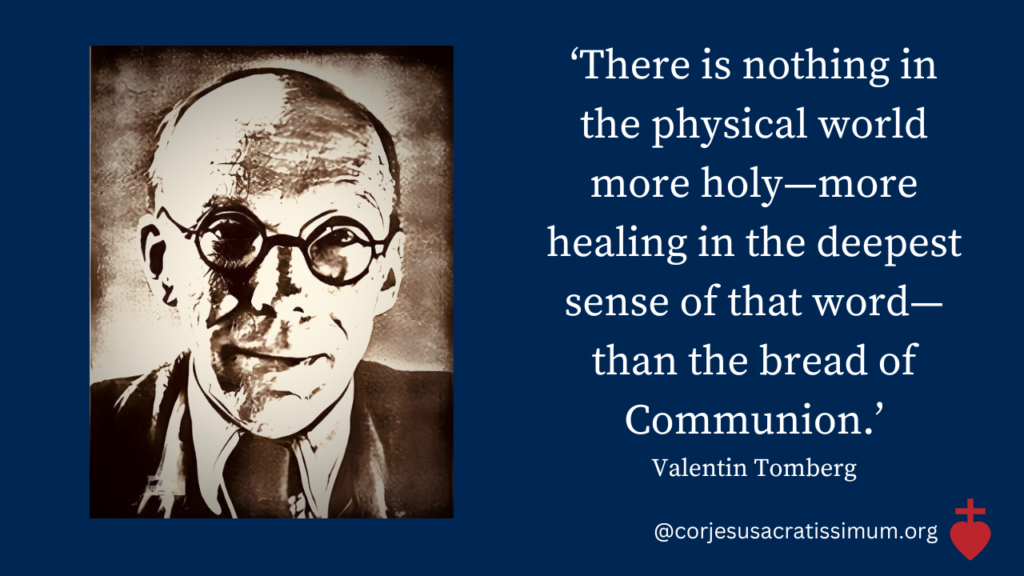
In recent years, most of my blogging has concerned the crisis of the Catholic tradition in the modern world. But, today, I return to some old stomping grounds, which may be less familiar to newer readers—and could even strike some as downright odd.
I refer to the Russian Catholic convert Valentin Tomberg (1900 -1973) whose magnum opus Meditations on the Tarot served to liberate me from the New Age movement, leading me to the Church.
Whilst this book has nothing to do with fortune telling, my esteem for it may concern certain readers. (If you are such, I recommend you read here and possibly also here. The videos on this page page may also help.)
I would also note the following article contains a lot of concepts and vocabulary unfamiliar to many Catholics. But this is necessary for the task I am about to undertake—a task not so much directed to faithful Catholics, but people like the man I once was: terribly confused about the issues here and struggling for clarity.
On the State of Confusion surrounding Valentin Tomberg
For, alas, my task concerns the fact that an excessive amount of dreadful misinformation can be found about Tomberg on the web.
Now, part of this is due to Tomberg’s Anthroposophical background in his youth, before he converted to Catholicism in the early 1940s.
Anthroposophy: the word refers to a spiritual approach developed by the Austrian Rudolf Steiner (in over 350 books!) who hoped that Christ would thereby become directly cognisable by modern humanity sans need for the Church. One might consider it a Twentieth Century form of Christian Gnosis, although Steiner preferred to call it ‘Spiritual Science’.
Now, those last two sentences hardly sum up Anthroposophy! But it is impossible to sum up 350 books in two sentences! Yet from these two sentences alone, one can begin to see how problematic Anthroposophy is for the Church. It goes much further! For, speaking very loosely, Steiner’s view of Jesus Christ appears Nestorian. But addressing the vast problems presented by Anthroposophy is far, far beyond our present scope.
Right now, our point is that Valentin Tomberg renounced his youthful Anthroposophical writings—specifically requesting that they not be republished—because he no longer believed in so-called ‘Spiritual Science’ instead of the Church.
However, Tomberg’s youthful work has been republished and that is one factor among many more (too many to enter into here) that breeds confusion.
Recently experiencing this serious problem, in various corners of my personal life, I also feel it right, after intense prayer and reflection, to act. Thus, I trust my conscience calls me to speak.
I am therefore posting two major entries concerning Tomberg – the second features a private letter I wrote long ago about Steiner and Tomberg, now made public for the first time.
Between these two entries, I also hope to suggest something of my own painful journey from Anthroposophy to Catholicism. Indeed, it took years of concentrated inner work to extricate myself from it. The great confusion surrounding Tomberg did not help me.
In my view, there are those who are on a same or similar path. This is largely why I publish this entry (and the following one).
A 1970 Letter from Tomberg
However, before posting my own private missive, I want to make more widely available a short letter from Tomberg in 1970 which makes his renunciation of Anthroposophy plain. Afterwards, I expand with commentary.
A little context is necessary. This letter was written to a German Anthroposophist who wished to travel to meet Tomberg, where he lived in Reading, England. The Anthroposophist was enamoured of Tomberg’s 1930s Anthroposophical Studies of the Old and New Testaments.
Before we launch in, one thing should be noted. I have made no changes to the words in this text (apart from deleting the addressee’s name). But I have ‘re-paragraphed’ it – i.e. broken longer paragraphs down into smaller ones.
I often do this at this site. The internet is a different medium from printed matter and I think it requires different standards. It is hard for many to read properly from computer screens. Adding white space helps. Moreover, Tomberg’s letter below is rich and dense, deserving to be read contemplatively, line by line. Breaking it down this way can assist its meditative absorption.
Dear Mr –
Here is a late-but well-considered reply to your letter of 15.1.1970 which I have read and pondered thoroughly. My main question and worry is how I could save you an expensive disappointment.
Because a disappointment is unavoidable if you came to Reading to meet me personally; you would not encounter the one who emerged as the author of the ‘Studies’ in the thirties and who represented a centrally focussed spiritual science – simply for the reason that he isn’t there.
He no longer exists.
The author of the ‘Studies’ concerning the Bible and the Gospel was a man who made it his task to save Rudolf Steiner’s life work – spiritual science – from eradication and sclerosis in the thirties by bringing it back to its central focus.
However, the inner descendent of this same person today believes that there is no spiritual science and never can be. Because even a spiritual science based on its central focus can only add to the mill of death.
It will unavoidably become intellectualised and ‘fossilised’.
Also spiritual science never existed because the essential criteria for every science must be that it can be tested, and that it applies universally.
In reality, relating to the religious element, it was liberal theology or ‘theology on its or ‘theology on its own initiative’, and in an anthropological or psychological sense, a generalisation of personal, psychological experiences.
Whilst the experiences themselves are mystical they cannot claim a status that is scientific – universally applicable or verifiable. It follows that so-called ‘spiritual science’ can only be psychologically convincing on the basis of a faithful endorsement by a particular group of people, objectively, however only on the basis of trust in the account of the witness, i.e. authority.
No pope has ever demanded of mankind such an extent of trust as the ‘spiritual scientist’ or initiate Rudolf Steiner.
The pontiffs represent tradition with hundreds of witnesses, whilst the ‘spiritual scientist’ draws on his own experiences and their interpretations and not out of tradition, and whether intentional or not demands an authority which rivals that of the Pope.
Alas, like the anti-Pope.
None of this is spiritual science which doesn’t mean that there isn’t and never was knowledge of the spirit.
But knowledge of the spirit is not science but inner certainty – that means it is a condition that cannot be imposed on someone else. In any case it has to forego any claim to universal validity and scrutiny. It is based on the most personal inner experience and can possibly only be shared with very close companions who have been joined through destiny.
This is the spiritual change that has happened to the Valentin Tomberg of the Thirties. He no longer has a relationship to spiritual science, which he believes to be abstract.
Also the physical change since then has been enormous. He celebrated his 70th birthday nearly a week ago, and recently underwent a major operation from which he has barely recovered. He finds socialising and communication with people rather difficult. Today he can only bear the life of a recluse, e.g. he spent his 70th birthday with a party of seven visitors, the consequence of which was a painful, sleepless night and a few days of depression!
You see, dear Mr – you will not encounter the Valentin Tomberg of the Thirties. The distance which separates me from him today is as big as two incarnations. Really I should now have a different name; but for civil reasons that is not possible. Nothing lies further from me today or would be more tiring than to see the ashes of the Anthroposophical past raised up …
Shield me from discussions about the ‘Studies’, methods of work and similar things, which are now totally alien to me.
Today my life is prayer and contemplation and that – and only that – is what I live for; not study.
In the sincere hope that you will understand.
Yours faithfully,
Valentin Tomberg
Quoted in Sergei Prokofiev The Case of Valentin Tomberg—Jesuitism or Anthroposophy? p.
Now, a traditional Catholic may still have problems with the above – particularly the reference to incarnations (Again, I recommend this link here, if you are troubled, dear Lector.) His oeuvre presents problems that I do not deny.
However, today, I am not writing to address those problems. As indicated, I speak out of serious concern—due to recent movements in my own life—that Tomberg’s legacy is suffering things it ought not to suffer by being confused with things that the man clearly renounced.
Foreword for Monarchy by Roger Buck
Some Commentary on Tomberg’s Letter
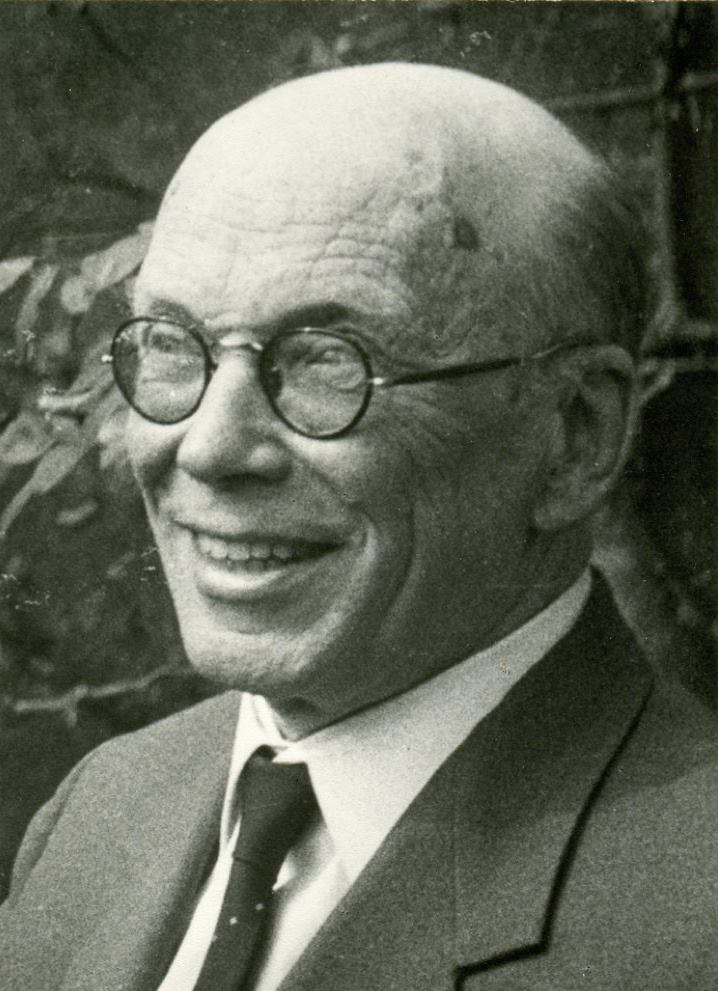
Now, one would think the letter above would be sufficient to end all confusion! He describes his Anthroposophical studies as ‘totally alien’ to him.
One could hardly be more clear!
Despite that, his letter contains some striking subtleties on closer reading. Note this:k Tomberg speaks of his 1930s self, writing the Anthroposophical studies, as a man who ‘made it his task to save Rudolf Steiner’s life work – spiritual science … by bringing it back to its central focus [italics added].’
What he writes two sentences later is therefore all the more remarkable. To wit:
Even a spiritual science based on its central focus can only add to the mill of death [italics added].
Let us pause to consider this. The youthful Tomberg already saw that Anthroposophy was flawed: He meant to ‘save it’ … But he came to conclude that even a redeemed Anthroposophy—restored to its centre —can only foster death.
And there is so much else besides: ‘There is no spiritual science and never can be.’
One line, however, is particularly striking in terms of the traditional turn that Tomberg took from around 1943 onwards. He sees Anthroposophy in terms of:
liberal theology or ‘theology on its own initiative’,
Here Tomberg criticises Anthroposophy in a manner reminiscent of much else in his mature writings, which feature a stinging critique of classical liberalism in general. (At least, it was stinging for my once profoundly liberal self!)
In my own painful course of extricating myself from Anthroposophy, it was necessary to confront the fact that the Catholic Tomberg faulted liberal modernity in a fashion very different to Steiner.
We have referred to this many times at this website. For example, we have considered Tomberg’s severe critique of the liberalism of Vatican II, which liberalism he also clearly believed was leading to death:
[Vatican II] failed … to guard the ‘portal” where the way begins which leads to degeneration, to exhaustion, and to death (hades) – the ‘way of the world”. This failure to guard the threshold of the portal opening up to the ‘way of the world” … is nothing else and can be nothing else but the way to death.
Valentin Tomberg, Covenant of the Heart, p. 111.
And yet many Anthroposophists today try to maintain that Tomberg never made the radical break, plainly testified to in the letter above.
Excuses are made. One charitable soul once wondered aloud to me if Tomberg suffered a bad mood the day he wrote the above! And I have heard much more like that from souls desperate to reconcile their Anthroposophy with Catholicism. More credibly, some have pointed out that, in fact, Tomberg never posted his letter.
We cannot know why Tomberg never sent it. Perhaps events intervened and there was no longer any need to. Perhaps he found a different means – a proxy perhaps – given the difficulties he refers to in ‘communication’.
However, let us listen, really listen, to Tomberg’s opening line in the letter above.
Here is a late – but well-considered reply to your letter of 15.1.1970 which I have read and pondered thoroughly [italics mine].
Can we not hear what Tomberg actually says here?! I address this question to Christian souls I respect who apparently find it most difficult, like I once did, to distinguish the late Tomberg from the younger version …
For the letter is hardly an isolated instance within his writings. Many, many instances support the the sentiments he expresses here.
Admittedly, writing for the public, Tomberg usually speaks in more nuanced, less direct, fashion than in this private correspondence. For example, in Covenant of the Heart (recently retitled as Lazarus Come Forth and written around the same time as the 1970 letter) Tomberg writes:
Alas, it happened, however, for reasons which we need not go into here, that Rudolf Steiner gave his work the form of a science, so-called ‘spiritual science”. Thereby the third aspect of the indivisible threefoldness of the Way, the Truth, and the Life – namely Life – was not given enough attention. For the scientific form into which the logic of the Logos had to be cast, and by which it was limited, left little room for pure mysticism and spiritual magic, that is, for Life. So there is in Anthroposophy a magnificent achievement of thought and will – which is, however, unmystical and unmagical, i . e . in want of Life [italics added].
Valentin Tomberg, Covenant of the Heart p. 70.
Clearly, Tomberg still acknowledges ‘magnificence‘ within Anthroposophy. One should recognise the nuances here. However, too often people focus on these nuances to avoid what is also clearly present. Namely, that is his conviction that Anthroposophy is deficient in life – because it has little space for it! He further suggests the fullness of Christianity – the Way, the Truth and the Life – is incomplete in Steiner’s dream.
Here we have an echo – admittedly slightly muted – of the 1970 reference to the ‘mill of death’.
But, as we shall see, far more than this suggest the break with Anthroposophy. The following passage, regarding mummification, appears to be a more veiled reference to the Anthroposophical Society and other such organisations.
Dear Unknown Friend —you who are reading these lines written by a Hermeticist in 1965, after nearly fifty years of endeavour and experience in the domain of Hermeticism —I beg you … to regard what is written here as … a testament [to a hermetic] task in question.
If you consent [to the task], do all that you judge to be proper, but one thing I implore you not to do: to found an organisation, an association, a society or an order which is charged with the task in question. For the tradition lives not thanks to organisations, but rather in spite of them.
One should content oneself purely and simply with friendship [Italics mine] in order to preserve the life of a tradition [Tomberg’s italics]; it is not necessary to entrust it to the care of the embalmers and mummifiers par excellence that organisations are, save for that founded by Jesus Christ [Meditations on the Tarot, pg. 569 ].
Anonymous, Meditations on the Tarot, p. 569.
Alas, those who attempt the work of Christian Hermeticism today often appear far more concerned with esoteric organisations such as Anthroposophical Society, rather than Tomberg’s summons to the Church and simple friendship. One can only wonder what might happen in the Church, if, instead of these organisations, they heeded Tomberg’s call:
Let us range ourselves amongst the builders of the ‘great cathedral’ of mankind’s spiritual tradition — and let us try to contribute to it. May the Holy Scriptures be holy for us; may the Sacraments be Sacraments for us; may the hierarchy of spiritual authority be the hierarchy of authority for us.
Anonymous, Meditations on the Tarot, p. 410.
Travelling Back in Time: Tomberg in the 1950s.
The above quotations are are all from the mid-1960s or after. However, far, far more exists to support them from earlier years, including works entirely unpublished in English and a great deal of personal correspondence either unpublished or only available in a German biography by Michael Frensch and Elisabeth Heckman (Amazon link here). Let us commence travelling back in time from 1970 …
Our first stop entails some brief excerpts of Tomberg’s 1950s correspondence in the biography. Alas, I can only stumble through German, but a German friend has translated some passages from which I offer small snippets.
For example in a February 1950 letter we find Tomberg writing:
Anthroposophy was dry, i.e. it did not have living water, because it did not contain anything of the Holy Virgin Mary. It had the fire but it brought neither holiness nor healing but always was more postulate and demand: The flame of consciousness, once fanned offers more and more knowledge of what should be but it does not transform what factually is.
Quoted in Heckmann and Frensch, Valentin Tomberg 1.2, (German biography of Tomberg) p. 186.
And in a 1956 letter Tomberg anticipates what he would later write in his letter on the Seventh Arcanum letter regarding psychological inflation.
There are it has to be said, many levels of ‘ego-inflation”, of megalomania-pre-clinical and clinical stages. already the consciousness which informs the whole community of Anthroposophists, to belong to an elect ‘Michael-community”, which has no need of the Sacraments of the Church (and particularly the Sacrament of Penance!), which is called to replace all faith by ‘knowledge”, which is called to show new ways to science and art and to threefold-organise the state – already this consciousness is megalomania, if only its pre-clinical stage.
Quoted in Heckmann and Frensch, Valentin Tomberg 1.2, (German biography of Tomberg) p. 278.
Foreword for Monarchy by Roger Buck
Nearly Thirty Years before 1970: Tomberg’s Catholic and Political Conversion
It would be tempting to stay with the 1950s. Far more might be noted. However, I want to go back to the early 1940s when Tomberg converted.
At that point, Tomberg commenced his first Catholic work – a legal-political thesis entitled Degeneration and Regeneration of Jurisprudence (now republished as The Art of the Good—review here) And for anyone who understands Rudolf Steiner’s Anthroposophy that book and its two successors make clear – perhaps like no others! – the stunning negation of the core of Steiner’s Anthroposophical project. This is to say: spiritual cognition, pretending to be science and divorced from faith, tradition and religious authority.
We therefore enter fresh territory at this juncture: political territory rather simply the conflict between Anthroposophy and faith.
But my task will be to show that Tomberg’s post 1944 legal theses reveal a political earthquake within his soul. That earthquake has much to tell us regarding what happened to Tomberg’s former faith in ‘spiritual science.’
As a point of departure concerning Tomberg’s legal-political thinking after 1944, I cite Robert Powell, a man who has served Tomberg in numerous ways (and been vilified by Anthroposophists for his efforts!). Robert Powell is a man whom I know a little. He has been very kind to me in the past and I warmly appreciate and respect him, even if I probably differ with his views regarding the core issue here: to what extent Tomberg renounced ‘spiritual science’.
However, even Robert Powell has spoken about the challenges within Tomberg’s legal work for Anthroposophists. In a lecture given in 1986, Powell described the first legal thesis as:
A work which contains many statements difficult to assimilate from an Anthroposophical point of view. The title is Degeneration and Regeneration in Jurisprudence. [Tomberg] tried to depict how, in fact, the law was in fact Divine law. We have, for example, the Ten Commandments, a manifestation of Divine law, how this has more and more degenerated so law has become more and more arbitrary and that a regeneration has to take [place]. But there are some, as it were, strong Catholic statements within this work which for many Anthroposophists make it an extremely difficult work to accept.
Lecture at: http://www.vermontsophia.com/powintr2.htm
It is this and it is far more than this. The legal-political works undercut the entire basis of Anthroposophy.
Once again, Anthroposophy was intended as a means to render Christ available to humanity through a modern ‘scientific’ form of gnosis – sans need of faith or Church. Indeed, Steiner was highly critical of Catholicism, suggesting it would have been better had the Catholic Church perished at the onset of modernity, hundreds of years ago.
And as we have also suggested, Steiner was genuinely and deeply horrified by the world falling into de-Christianised materialism. Many of his prophecies, alas, appear all too true.
Thus, as bizarre as it will no doubt sound to non-Anthroposophists, Steiner was literally trying to save the world by so-called spiritual science.
But as we will see, the Catholic Tomberg lost faith in Steiner’s project to save humanity from de-Christianisation. He now proposes something very different – indeed ‘totally alien’ – to Anthroposophy. But before we coming to that, a little digression is in order.
A Digression: Steiner’s Grave Concern for de-Christianisation
I should make clear that Rudolf Steiner did not himself use language such as ‘de-Christianisation’. Rather his lexicon is very foreign to most Catholics. For example, he spoke of the demon Ahriman as working to plunge humanity into materialism, blinding people to what Steiner revered as the Mystery of Golgotha.
Indeed, Steiner believed that what transpired on Calvary forever changed the very fabric of the cosmos. This must be acknowledged, even if Steiner’s thinking remains intensely problematic for Catholics on multiple fronts.
Still, Steiner is often confused with the New Age movement – with its roots in the militantly anti-Christian positions of Helena Blavatsky’s Theosophy. This confusion is understandable, inasmuch as Steiner himself was once deeply involved in Theosophy.
However, Rudolf Steiner broke with the Theosophists on this very point: they did not recognise that Christ transformed the world on Calvary. Indeed, he clearly considered Theosophy ‘Luciferic’. And in later years, he would claim that the only reason he temporarily aligned himself with it was the hope of Christianising it.
Moreover, Steiner’s esoteric version of Christianity harbours none of the happy, upbeat Age of Aquarius of New Age nonsense. No! Steiner was very serious regarding humanity’s continuous descent into materialism. Certainly, Steiner would consider New Age fantasies of Mayan calendars or ‘hundredth monkey‘ en masse ascent to higher consciousness as as Luciferic too.
There are profound, complex matters here that I rarely enter into in my writing, partly because I doubt my thinking is sufficiently mature to do them justice. (Thus, above, I used the verb suggested carefully. In many cases, I can only suggest lines of thought which seem valuable to me, but which I cannot yet develop further.)
Be that as it may, I see no reason to doubt Steiner’s claim that he always rejected the non-Christian basis of Luciferic Theosophy. I am not trying to defend Steiner’s Anthroposophical replacement of the Church, but let us give credit, where credit is due.
Again my reason for publishing this piece and the following one, is, as I say, to help people extricate themselves from ‘spiritual science’. Like extricating myself from the New Age movement, I found it a tough journey and I hope these two posts can help.

Steiner and Tomberg: Agreed on the Problem—Not the Solution
But let us return to the point above: Tomberg’s truly mind-boggling 1944 Catholic reversal of Anthroposophy in his legal-political theses. As we now intend to show, this cannot be anything other than complete loss of faith in Anthroposophy.
Nevertheless, certain continuities with Steiner remain in Tomberg’s post 1944 oeuvre. Perhaps it will clarify these, if I observe that from his 1944 legal-political works onwards, Tombergs still shows a certain solidarity with Steiner AS TO THE PROBLEM. The problem is humanity’s ongoing fall into decadent, de-Christianised materialism.
However, AS TO THE SOLUTION Tomberg now turns Anthroposophy on its head.
For whilst Tomberg clearly means to support Hermetic research – largely transmitted through intimate friendship and obedient to the Church – his solution is no longer an independent ‘science of the spirit’ which negates faith and Church.
For Tomberg’s solution not only involves the Church, but a world in which the Church would have restored authority in the political realm!
It is scarcely possible to imagine anything more removed from the spirit of Anthroposophy.
Truly, this was once mind-blowing to me. But unlike many Anthroposophists who can’t quite believe that Valentin Tomberg ever became genuinely Catholic, I needed to confront Tomberg’s Catholic political philosophy head-on.
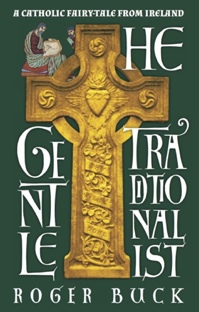
Somewhat obliquely, I deal with this in my upcoming book, The Gentle Traditionalist, where I also briefly quote a passage from Tomberg’s legal-political work. Here I share that same passage again, breaking it down into down in shorter paragraphs for easier assimilation. I am also adding emphasis.
The liberal minimum state … must shape public life only to the degree necessary to protect … liberty….
This liberty, however, may be used in certain ways: Individuals, who are citizens of a liberal legal state, may use their freedom to choose certain obligations, which for example go hand in hand with Christian religion and the Church.
Then the state must serve the Church in the same way as it must serve every other use of freedom chosen by its citizens. The liberal minimum state thus becomes a Christian minimum state. The latter is in its meaning a legal order serving Christianity.
It relates to the Church and the totality of cultural life as the body relates to the soul. As the body serves the soul by providing it the location for a developing consciousness, so the Christian minimum state serves the Christian culture, represented and led by the Church [italics mine].
Valentin Tomberg, quoted in Buck, The Gentle Traditionalist, p. 135.
Anyone who truly understands Anthroposophy will readily recognise this is not Steiner’s solution to the crisis of the West.
Here is why the Anthroposophist Sergei Prokoviev attacked Valentin Tomberg in two volumes beginning with The Case of Valentin Tomberg: Anthroposophy or Jesuitism?
Obviously, this is also why Robert Powell honestly admitted the problem, in stating that Tomberg’s legal works contain:
strong Catholic statements … which for many Anthroposophists make it an extremely difficult work to accept.
Lecture at: http://www.vermontsophia.com/powintr2.htm
But unlike Powell, many Anthroposophists who cherish Tomberg – as do I – seem unable to honestly confront the challenges of Tomberg’s political thinking. For whereas Rudolf Steiner hoped to save humanity by means of an independent spiritual science – which negated faith, Church, authority and dogma, Tomberg now turns 180 degrees.
Indeed, in Foundations of International Law, his second legal-political work, he states that the only hope for saving humanity lies in:
A legal system for humanity suitable to save and preserve humanity’s culture and to enable its future development for it is in mortal peril [Italics added].
And that legal system is clearly one, like we noted above, whereby the state serves the Church.
Tomberg and Ultramontanism
Moreover, Tomberg’s Catholic writings assume a decided Ultramontane tone. Ultramontanism, for those who may not know, originally referred to a movement in French Catholicism, after the 1789 revolution. The Ultramontanists resolved to look not towards Paris, but beyond the alps (ultra-montane) to the Pope in Rome. It would lead to the 1870 declaration of Papal Infallibility, which Tomberg, in complete contrast to Steiner, now explicitly supported.
Above all, Ultramontanism reflected Jesuit spirituality. Hence Prokoviev’s accusation: Tomberg has abandoned Anthroposophy for Jesuitism. (Personally, I do not believe things are as simple as Prokoviev makes out. But people should not use that as an excuse to blank out everything Prokoviev said. It is far from being without substance. Tomberg’s political writings especially clearly express one variety of Ultramontanism, at least.)
The following passage from Tomberg, written around 1968, profoundly reflects his Ultramontane revolution begun in 1944.
There are still people who have [not] an individualistic brand of belief, but … unshakable security in the truth of the Christian revelation as transmitted and taught by the Church.
They know the truth of the following: Extra Ecclesiam non est salus (‘there is no salvation outside the Church’); the Holy Father is not and can not be the mouthpiece of an ecumenical council; the Holy See alone can make decisions in questions of faith and of morals – a majority of the bishops cannot do so, and even less can a majority of priests or congregations do so; the Church is hierarchic-theocratic not democratic, aristocratic, or monarchic – and will be so in all future times; the Church is the Civitas Dei (“the City of God”) and not a superstructure of the will of people belonging to the Church; as little as the shepherd follows the will of the herd does the Holy Father of the Church merely carry out the collective will of his flock; the Shepherd of the Church is St. Peter, representing Christ – his pronouncements ex cathedra are infallible, and the power of the keys of the kingdom of heaven belongs to him, and him alone.
In other words, those who become solitary in order to seek profundity may reach on their path of spiritual experience to the unshakable insight that the dogmas of the Church are absolutely true.
And so it can happen that, as they did at the time of the Arian darkening of the Church, the “hermits” of today may again come to the assistance of the Holy See, leaving their solitude to appear as witnesses to the truth of Peter’s Throne and its infallible teaching.
In those times it happened that St. Anthony of Thebes left the desert and hurried to Alexandria to support St. Athanasius with the weight of his moral authority St. Athanasius who became the standard bearer for the divinity of Christ.
The darkening which today is described as “the present crisis of the Catholic Church” can lead to the necessity for the solitary sons of the Church to hurry to the aid of the Holy Father, the most solitary of solitaries, in order to save the Church from the abyss toward which she is moving . . .
Valentin Tomberg, Covenant of the Heart p. 124-125.
Steiner: ‘One Can Turn the Occident Catholic, but One Will Thereby Slay its Civilisation’
Thus, a profound dichotomy between Steiner and the mature Catholic Tomberg is plain to anyone who understands Anthroposophy and particularly Steiner’s concerns in the modern era of the Consciousness soul’. However, to make my point emphatically clear, let me turn to one particularly strange passage from Steiner.
For, here, Steiner appears to be concerned that Catholicism could indeed become the dominant force in Western civilisation again! He speaks of a resurgent intellectual Catholic movement, which, moreover, he says is not to be underestimated. According to Steiner, it has real power to shape the course of history. We can only quote a little, but more can be found here.
A neo-Catholic movement is making itself felt that is trying to take hold of the old traditions that have rigidified in dogmas …
We can observe an intellectual, cramped tendency towards rigidified doctrines.
[This] neo-Catholic movement … allows us to discern how cramped people’s thoughts are today, how people are developing inwardly cramped thinking so that they can avoid having to rouse themselves and can remain mentally lazy …
More and more, things will come to a head in such a way that a powerful movement with a fascinating, suggestive, hypnotic effect on all those wishing to remain lazy within the intellect permeates the world.
A Catholic wave is even pervading the world of intelligent people who wish, however, to remain lazy within their intelligence. The drowsy souls just do not realize it. But it must remain unfruitful [in terms of] what Oswald Spengler described so vividly in his Decline of the West.
One can turn the Occident Catholic, but one will thereby slay its civilisation [italics added].
Rudolf Steiner, Materialism and the Task of Anthroposophy, p.
Clearly, Steiner means to apprise his followers of this ‘powerful movement’ which he even suggests could lead to turning the West Catholic.
Indeed, this is not the only time Steiner spoke of this possibility. In another lecture, he warns that unless the West takes up Anthroposophy, one of three direful futures await it. Without ‘spiritual science’ the West will fall into either Americanisation, Communism – or Catholicism! Were Steiner alive today, we can easily imagine which of three he would declare the ‘winner’ for the Western soul.

Evidently, Tomberg no longer heeded Steiner’s warnings. And, for myself, I am clear that Tomberg actually joined his forces to the so-called intellectual ‘neo-Catholic’ movement decried by Steiner.
Now, in my own painful struggles over many years, it took a great deal of blood, sweat and tears for me to admit that conclusion. After years of my own personal denial, what should have been obvious all along obvious all along stands revealed. Thus Tomberg’s French masterpiece Meditations on the Tarot shows considerable regard for numerous French thinkers who appear to be the very type of people Steiner had in mind, including Josephin Péladan and Teilhard de Chardin.
An Aside on Peladan and Belloc
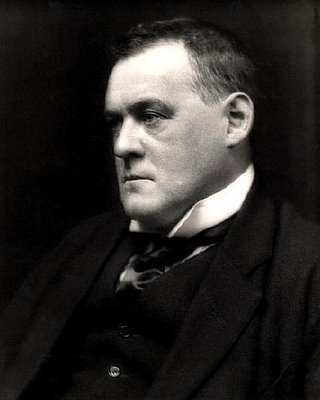
Meanwhile, I came to see that England had its own parallels to these French thinkers. This would become clear as I pondered the English intellectual movement which James Lothian called Bellocianism. Initiated by the Anglo-French Hilaire Belloc and drawing on the same stream of French Ultramontane Counter Revolutionary thought as Tomberg, Bellocianism continued through GK Chesterton, Christopher Dawson, Evelyn Waugh and even influenced Graham Greene.
Now, Belloc’s French blood helped him, I think, to a brusque, passionate defense of Ultramontane Catholicism, the likes of which have frequently offended the more genteel, largely Protestant English speaking world .
But Belloc’s passionate Catholic faith hardly comes close to some of the people Tomberg cited appreciatively, most notably Josephin Peladan. And if may permit myself a little joke in the contemporary vernacular, Josephin Péladan strikes me ‘Belloc on steroids’!
Belloc comes nowhere near Peladan’s ferocious condemnation of modernity and defense of all things Royalist and Roman. And yet the Catholic Tomberg writes warmly indeed of Peladan, including such commendations as this:
Josephin Péladan defined magic as “the art of sublimation of man”; no other formula is superior to his … Peladan had a very profound understanding of the emblem of magic: the shield with the eagle in flight. All his works bear witness to this. Together they represent a magnificent flight. [Meditations on the Tarot, pg. 54
Valentin Tomberg, Meditations on the Tarot, pg. 54
Peladan’s works are hardly available in English (although we have a little more about him here, including a translated passage that is revealing in this context.)
For those wishing to better understand Tomberg’s own Ultramontane revolution, I particularly recommend Belloc, who honestly strikes me as hermetic genius. I do not use the last word lightly. Pondering the vast sweep and originality of his 153 books leaves me in no doubt of that whatsoever. Here I would also recommend reading a modern author, Charles A. Coulombe, of French descent himself, who seems something of a modern day heir of Bellocianism. Moreover, Coulombe’s political thinking is redolent of Tomberg’s in many respects. (I compare Tomberg and Coulombe in my introduction to a numinous piece from Coulombe here.)
Tomberg’s Anthroposophical Renunciation: A Thirty Year Consistency
Much, much more might be said. Perhaps one day I will even attempt a book on these matters.
However, to return to the 1970 letter above, we can discard the excuse that Tomberg never posted it. By now, it should be clear that he was perfectly sincere in claiming that Anthroposophy had become ‘totally alien’ to him. For what he writes there is consistent with three decades of writings and correspondence from 1944 onwards. He rejected liberal Anthroposophy as a solution to humanity in ‘mortal peril’ and turned to things which certainly appear illiberal indeed!
Given that we have documented Tomberg’s astonishing turn to an Ultramontane Catholic politics, it is perhaps helpful to briefly consider how the same themes repeat themselves up until the end of his life.
Much, much can be found in his 1950s and 60s unpublished in English correspondence, as well as Meditations on the Tarot and Larazus Come Forth. Here we might consider his repeated calls for hierarchy throughout – both the spiritual hierarchy of the Church and indeed political hierarchy as well. Here is a passage which reflects the legal-political theses that once struck me as severely indigestible:
The post of the Emperor…what an abundance of ideas concerning the post—its historical mission, it functions in the light of natural right, and it role in the light of divine right – of the Emperor of Christendom are to be found amongst medieval authors!
As it is suitable that the institution of a city or kingdom be made according to the model of the institution of the world, similarly it is necessary to draw from divine government the order of the government of a city — this is the fundamental thesis advanced by St. Thomas Aquinas (De regno xiv, 1).
This is why the authors of the Middle Ages could not imagine Christianity uster an Emperor, just as they could not imagine the Universal Church without a Pope. Because if the world is governed hierarchically, Christendom* or the Sanctum Imperium cannot be otherwise.
Hierarchy is a pyramid which exists only when it is complete. And it is the Emperor who is at its summit. Then come the kings, dukes, noblemen, citizens, and peasants. But it is the crown of the Emperor which confers royalty to the royal crowns from which the ducal crowns and all other crowns in turn derive their authority.
The post of the Emperor is nevertheless not only that of the last (or, rather, the first) instance of sole legitimacy. It was also magical, if we understand by magic the action of correspondences between that which is below and that which is above.
It was the principle itself of authority from which all lesser authorities derived not only their legitimacy but also their hold over the consciousness of the people.
This is why royal crowns one after another lost their uster and were eclipsed after the imperial crown was eclipsed. Monarchies are unable to exist for long without the Monarchy; kings cannot apportion the crown and sceptre of the Emperor among themselves and pose as emperors in their particular countries, because the shadow of the Emperor is always present.
And if in the past it was the Emperor who gave uster to the royal crowns, it was later the shadow of the absent Emperor which obscured the royal crowns and, consequently, all the other crowns — those of dukes, princes, counts, etc.
A pyramid is not complete without its summit; hierarchy does not exist when it is incomplete.
Without an Emperor, there will be, sooner or later, no more Kings. When there are no Kings, there will be, sooner or later, no nobility. When there is no more nobility, there will be, sooner or later, no more bourgeoisie or peasants.
This is how one arrives at the dictatorship of the proletariat, the class hostile to the hierarchical principle, which latter, however, is the reflection of divine order. This is why the proletariat professes atheism.
Meditations on the Tarot, pg. 86
Thus, Tomberg describes Europe as wounded without the Emperor:
Europe is haunted by the shadow of the Emperor. One senses his absence just as vividly as in former times one sensed his presence. Because the emptiness of the wound speaks, that which we miss knows how to make us sense it.
Meditations on the Tarot, pg. 86
And Tomberg closes the passage in a fashion redolent indeed of his legal-political works, wherein he suggests that – in essence, if not in execution! – Napoleon was correct, inasmuch as ‘he knew what had to be restored in Europe … the Imperial throne of Europe’.
Napoleon, eye-witness to the French Revolution, understood the direction which Europe had taken — the direction towards the complete destruction of hierarchy. And he sensed the shadow of the Emperor. He knew what had to be restored in Europe, which was not the royal throne of France — because Kings cannot exist long without the Emperor — but rather the Imperial throne of Europe.
So he decided to fill the gap himself. He made himself Emperor and he made his brothers kings. But it was to the sword that he took recourse. Instead of ruling by the orb — the globe bearing the cross — he made the decision to rule by the sword.
But, “all who take up the sword will perish by the sword.” Hitler also had the delirium of desire to occupy the empty place of the Emperor. He believed he could establish the “thousand-year empire” of tyranny by means of the sword. But again —“all those who take up the sword will perish by the sword.”
No, the post of the Emperor does not belong any longer either to those who desire it or to the choice of the people.
It is reserved to the choice of heaven alone. It has become occult. And the crown, the sceptre, the throne, the coat-of-arms of the Emperor are to be found in the catacombs…in the catacombs — this means to say: under absolute protection.
Meditations on the Tarot, pg. 86-87
The interested reader may wish to see my introduction to Charles Coulombe’s aforementioned numinous piece now published at this site, where we further quote a relevant passage from Tomberg’s little-known legal-political thinking.
A Personal Conclusion regarding ‘Mortal Peril’ and the Sacraments
Here in this piece we have focussed on the sheer thoroughness of Tomberg’s renunciation of spiritual science as a means to save civilisation from ‘mortal peril’.
For that reason, we have highlighted on what Tomberg placed in its stead: an unusual hermetic, yet deeply traditional, even Ultramontane Catholic vision, in which the State looked to the Church, as the Emperor once looked to the Pope.
In the midst of this, I have also alluded to my own long years coming to grips with Tomberg’s volte-face. As mentioned, a companion piece to this with a private letter written by myself long ago will shortly be published.
Regarding this follow-up piece, I would like make a few brief personal closing remarks.
Like Tomberg did in 1944, it seems urgent to me to recognise the ‘mortal peril’ of the West – and to search for answers.
Obviously, I have lost all faith in things like New Age-ism or Anthroposophy – the dreams of my youth.
Indeed, the only hope I have for the future of civilisation lies with the Church. (And it is not the Church of those who appeared to be steering the recent synod towards the ‘abyss’.)
My aspiration, then consists in whatever minuscule contribution I can make to the great task Tomberg suggests above: ‘to save the Church from the abyss toward which she is moving’.
That is what this website is largely about.
It is also what my two upcoming books are about – books which owe everything to Valentin Tomberg. For without him, I could not have extricated myself from the New Age dreams of my youth.
However, neither could I have extricated myself without something infinitely greater than Tomberg: ongoing immersion in the Sacraments, including not only the Holy Eucharist, but also the Holy Sacrament of Penance (which, as we saw above, Tomberg criticised Anthroposophists for lacking).
In terms of the ‘mortal peril’ we now face – which is the subject of my private letter concerning Tomberg to be posted shortly – the Sacraments of the Church are critical.
We need them, desperately.
Therefore, as we draw to our close, I would like to quote Valentin Tomberg just a little further on this matter. As irony would have it, our first quote stems from his Anthroposophical writings. For even as an Anthroposophist, Tomberg had recognised:
There is nothing in the physical world more holy – more healing in the deepest sense of that word – than the bread of the Communion Service.
However, the great importance Tomberg attached to the Sacraments is also testified to by something that goes straight to the heart of everything we saying here.
For the Catholic Tomberg repeatedly questioned or even criticised Anthroposophists or Hermeticists outside the Church who spurned the Sacraments. We have seen this from his private letters above.
But the same is also true for his public works. Thus in Meditations on the Tarot, Tomberg plaintively asks:
And why do members of secret societies or orders of the Masonic type consider the Sacrament of Flesh and Blood of the Lord insufficient for the work of building the new-man, and why do they seek special rituals to supplement it or even to replace it?
Anonymous, Meditations on the Tarot, p. 151.
The answer he suggests has to do with:
Because for some the superman has more attraction than the Son of Man, and because he promises them a career of increasing power, whilst the Son of Man offers only a career of “foot washing”.
Anonymous, Meditations on the Tarot, p. 151.
And not many pages later he adds:
The Church is based on the three sacred vows—obedience, poverty and chastity—whilst we Hermeticists behave as pontiffs, without the sacraments and the discipline that this entails [italics mine] …
We do not want to obey either religious or scientific discipline. At the same time, it is obedience or discipline which underlies the moral greatness of the Church.
All of this is intended as prelude to the piece that now follows, which considers how both Steiner and Tomberg saw the impending grave of civilisation – and how Tomberg turned to the Sacraments.
On a final personal note, I deeply appreciate the ongoing support of my regular readership. You know who you are. And if you can see the worth of what Kim and I are attempting here, I want to appeal to any support you can give us. At this time, I would particularly appreciate any help at all you can give me in getting the word out regarding my soon-to-be-published book The Gentle Traditionalist.
Not only does The Gentle Traditionalist feature Tomberg’s Catholic political philosophy – even quoting it as we mentioned – but it is also very much concerned with our present theme: the Sacraments of the Church in this time of ‘mortal peril’.
For speaking very personally, dear Reader, the Sacraments appear to me the only hope against the onslaught we face. And here is why Tomberg advocated them and rebuked the Hermeticists who scorned them.
All this is very much continued in the next post printing my private correspondence from the past. Now here: At the Grave of Civilisation? (Steiner, Tomberg and Modernity).
We would also direct you to another post I wrote years ago about Steiner, in which I point to the fact that Steiner once said something very odd and very challenging for Anthroposophists.
For Steiner actually said: ‘Rome … alone is awake’.
By this, he meant to say that no-one was more awake to the impending catastrophe than the Catholic Church. Coming from Steiner, this is exceedingly strange. Yet he clearly felt that, at least in terms of global danger, Anthroposophists and the rest of the world were drowsy or slumbering, whilst the Catholic Church was awake (more about this here).
Tomberg Videos and More . . .
There is much more about Valentin Tomberg both in an archive of articles at this website and in my three books published by Angelico Press.
Moreover I have numerous videos at YouTube that are relevant to these issues. Here are two:
Footnote:
* Translated ‘Christianity’ in English edition. French edition has ‘Christendom’ [Chretienté]
Foreword for Monarchy by Roger Buck

Buying Books at Amazon Through These Links Gives Us a Commission. This Supports Our Apostolate. Thank You if You Can Help Us Like This!

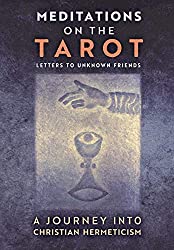
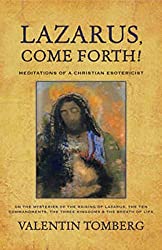

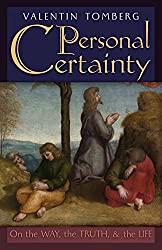




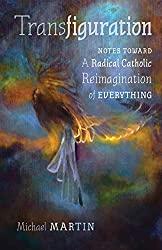
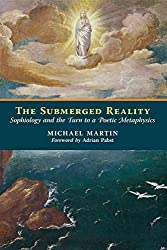

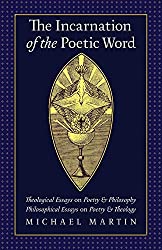
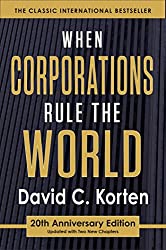

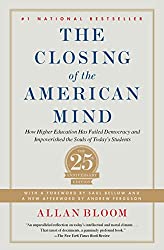
Comments
comments are currently closed
3 responses to “Valentin Tomberg’s Renunciation of Anthroposophy”
[…] « Valentin Tomberg’s Renunciation of Anthroposophy Valentin Tomberg on the Holy Church – in Bullet Points » […]
Dear Mr Buck,
I found your respect for these two extraordinary thinkers refreshing.
I have been on an interesting journey myself. A child of parents who who were deeply involved in Theosophy. My parents lived in TS Community and were members of the Inner Circle (who in later years renounced it).
I then had a meeting with the Christ and became a Christian and had many “mystical/magical” experiences. This was as a result of trying to find a way through internal suffering and my own u forgiveness.
Then in my 40’s I discovered the profoundities of Steiners’ works and became a Steiner teacher.
After a while the sterile intellectualism of many around me became painful.
I then experienced a complete loss of everything materialistic, literally.
After seeking help in the outer world for solutions I ended up in an even greater place of distress – I found the sacraments as being indeed the only source of what I was seeking.
The Christian Community Church was founded by Steiner. There I found the vessel of the Sacraments that are real, as are the substances and are what I consider the world/the addicts/the Bankets etc are all actually seeking – even thirsting for (unconsciously in perhaps most cases)
Most Anthroposophist I know sneer at the CCC and quote that only those who are “dumkoffs ” need it. But it is a profound place of dignity, utter respect for the rituals, hierarchical in its form etc. I have here learnt about the true place of the feminine/Isis/Mary aspect of the soul in relation to the Christ within its shelter.
In Steiner’s “Fifth Gospil” he relates how Jesus visited places where rituals were being enacted where the original purpose and even the Being who it was designed to work with, had ended, had been concluded and had deserted the ritual. However the ritual was still being enacted. The ritual is a reality and was going on creating a vessel for spiritual connection and co- creation. Only now it was filled with adversarial Beings that attacked the humans.
I must admit I thought of the Catholic Church when I read of this – and the misery we hear about in the media both of those who were preyed on and the poor tormentors themselves.
I was wondering if by any chance you have explored the Church rituals that Steiner called the basis of “Religious Renewal” ?
Thank you for your thoughtful and reasoned work.
Allison
Allison, I am so very sorry that I never replied to your thoughtful, moving testimony. I honestly do not know what happened. I have been overwhelmed by the response to my book, having far more to keep up in mail than I have ever had in my life. In the midst, this slipped from my mind.
In response to your final question – no I never had direct experience of the CCC, although I would certainly have gone in the past, had I had real opportunity to do so. I have read a great deal around it and met both those who felt they benefitted greatly and those who scorned it, as you allude to. Scorning Sacraments … a tragic thing.
It is hard for me to do full justice to your comments here. My attitudes to the things you evoke and to the world invoked in what I wrote above have changed so dramatically over the years and are so complex that I fear being misunderstood on all sides.
But amidst this complexity, I will note that Tomberg, in his Catholic writings, warned that dangers attend Hermeticists setting up rival altars to the Church (Catholic and Orthodox). At first, I happily disregarded or ignored Tomberg on this point as so many Anthroposophically-minded folk do. But as time went on, I began to more fully appreciate what Tomberg was getting at …
Huge, huge topic and the above is not meant to dismiss your spiritual search which strikes me as unusually heartfelt and authentic.
In terms of you writing:
“I must admit I thought of the Catholic Church when I read of this – and the misery we hear about in the media both of those who were preyed on and the poor tormentors themselves.”
The misery and torment is very real and the media is hardly serving this tragic situation. Rather than saying more in this limited space, I just want to point you to a piece taken from my book which I have here:
Sexual Abuse and Evil in the Catholic Church https://corjesusacratissimum.org/2015/10/sexual-abuse-and-evil-in-the-catholic-church/
In lieu of further elaboration of my complex views on all of the above, I will also point you to one last link that is relevant here.
Again, thank you Allison and please forgive this neglect which was not at all intended. Still, I am guilty of not being organised enough.